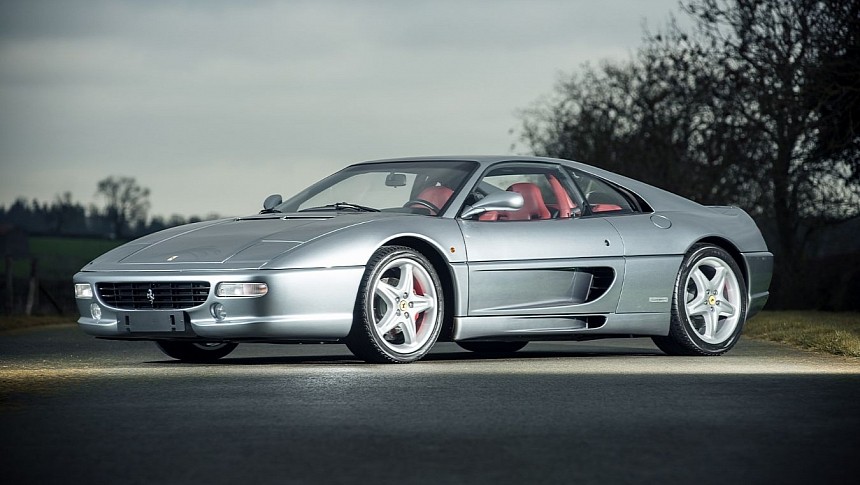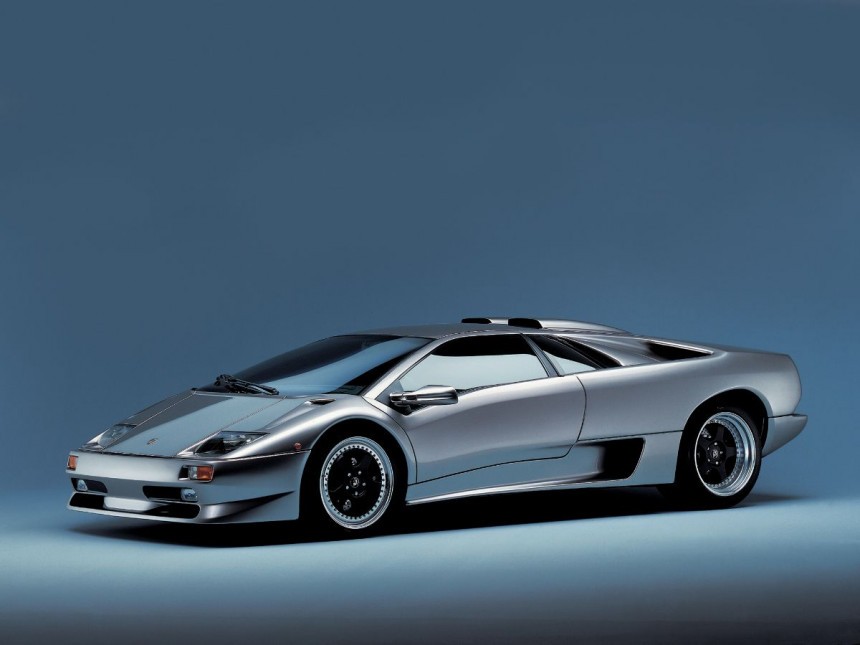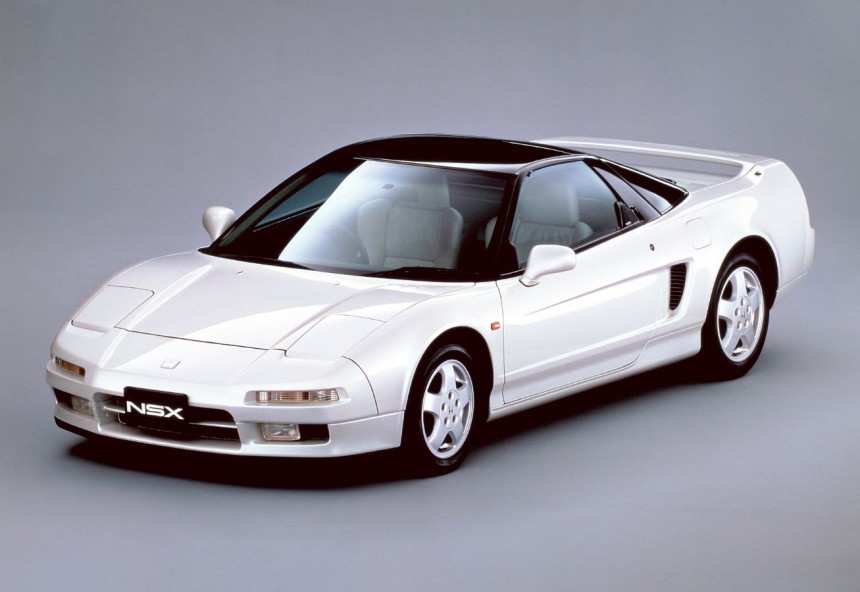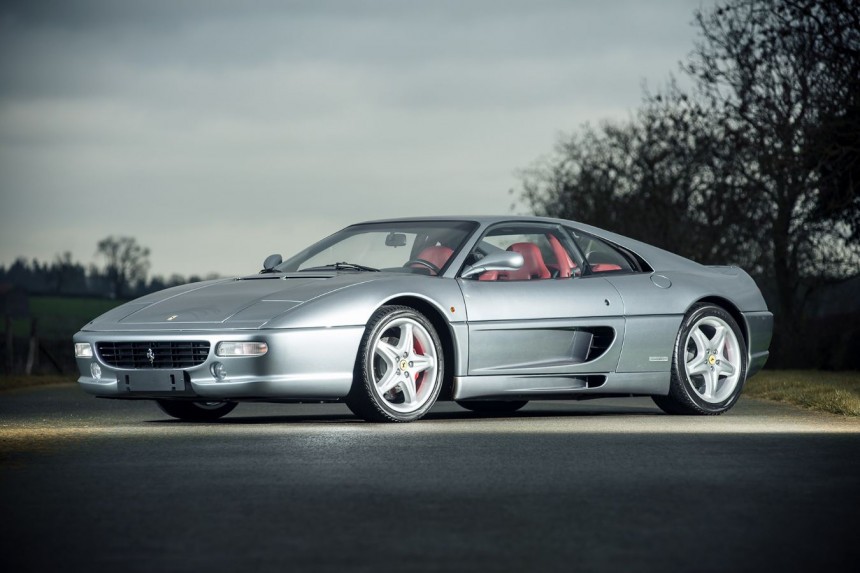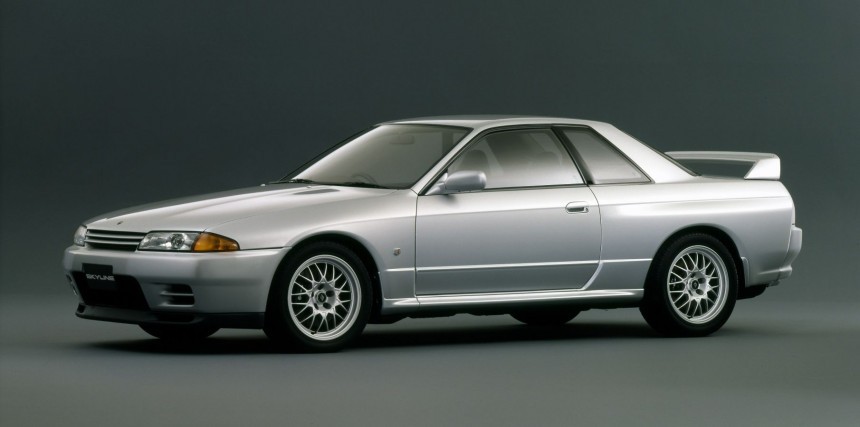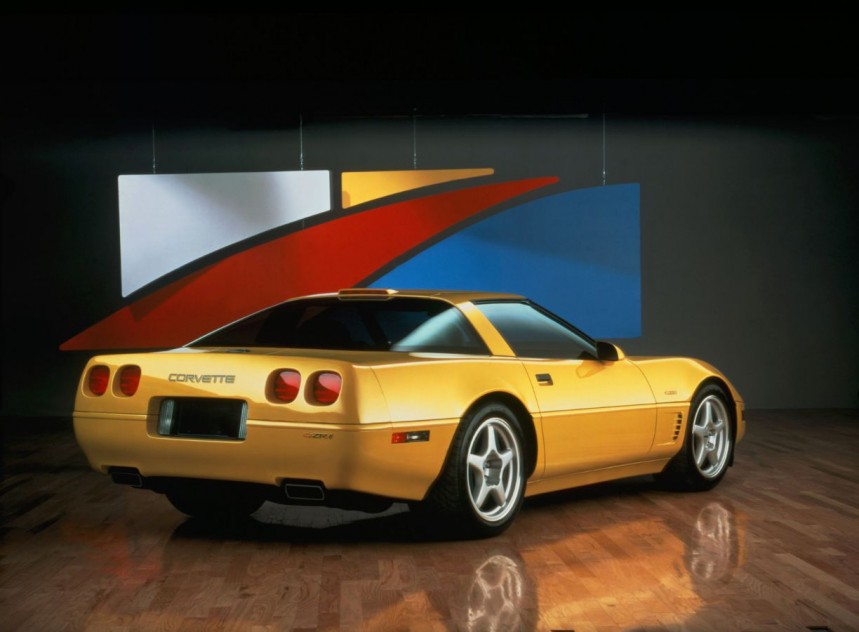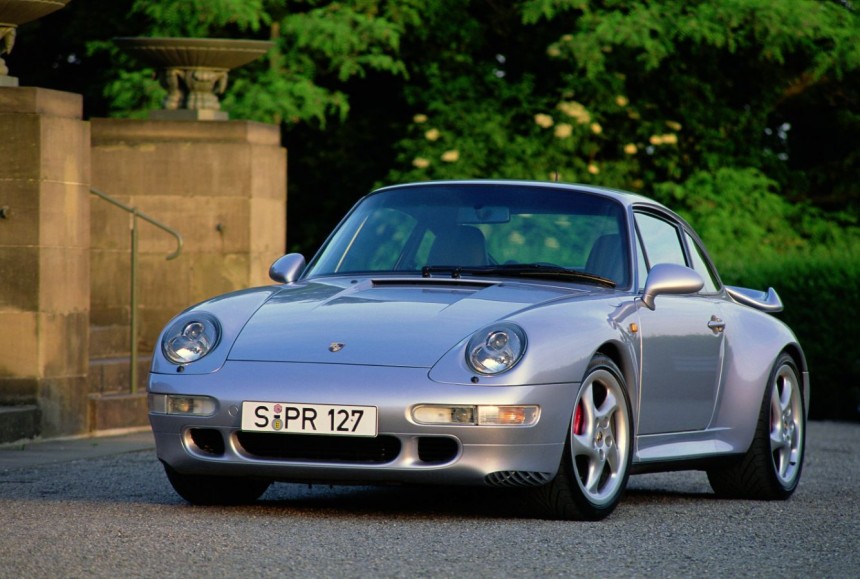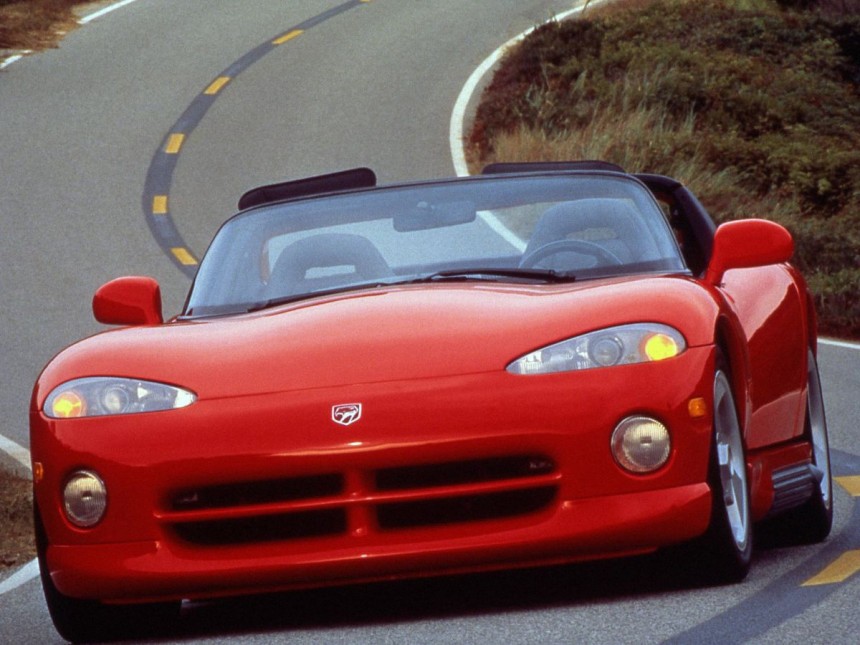The 1990s witnessed the birth of a cornucopia of automotive legends, with the usual suspects being carmakers like Ferrari, Lamborghini, and Porsche, which all dominated the scene.
With that in mind, the "post-Cold War decade" period was also known for an onslaught of innovative sports cars and supercars made by automakers that weren't necessarily known for their expertise in this field.
Even though the '90s began with a global recession that dampened car sales and almost killed off traditional sports car makers like Porsche, the overall vibe was a new beginning through trial and error.
Japanese brands like Nissan or Honda started coming out with downright supercar-killers that dominated the tracks, creating millions of fans in the process. These somewhat traditional brands produced a series of awe-inspiring machines that still command attention today.
To avoid a senseless horsepower war in a country where the maximum speed limit on highways is still 62 mph (100 kph), Japanese carmakers entered a gentleman's agreement in 1989. This agreement had placed a cap on the advertised horsepower of domestically produced vehicles at 276 (280 PS), with a maximum top speed of (180 kph).
Even so, it didn't stop almost all the mainstream Japanese carmakers from doing their best to fight and sometimes even win against the more established Europeans and Americans. Speaking of America, Dodge was in a much better shape back then, and if the Hellcat seems like overkill nowadays, you should have checked their lineup back in the early 1990s.
That said, I decided to gather the coolest vintage speed demons still available on the used car market, with the only connection between them being a 1990s birthday.
Ah, the Lamborghini Diablo. A name that still conjures up images of raw power, unapologetic flamboyance, and sheer automotive audacity. If there ever was a supercar that personified the excesses of the 1990s, it was this raging bull from Sant'Agata Bolognese.
The high-performance mid-engine sports car was built between 1990 and 2001, and it is the first Lamborghini production model capable of attaining a top speed of over 200 mph (322 kph).
Even though only 2,884 units were built in total, they encompassed at least 11 different versions of the Diablo, from RWD to AWD and from coupe to roadster, including a mid-cycle facelift for most variants.
No matter which Diablo might tickle your fancy, all of them are powered by a naturally aspirated V12, placed longitudinally behind the two seats, with 5.7 or 6.0 liters of displacement. Paired with a 5-speed manual, no matter the version, it was the last old-school Lamborghini developed before Audi's takeover.
The least mighty Diablo was the first iteration of the car, with the naturally aspirated 5.7-liter V12 delivering an impressive 485 HP (492 PS) and 428 lb-ft (580 Nm) of torque to reach a top speed of 325 km/h (202 mph). Over the eleven years of production, the displacement was increased to 6.0 liters, while its highest output grew to 575 HP (583 PS) and 465 lb-ft (630 Nm) of torque in the Diablo GT.
Prices for this Italian masterpiece on the used car market can range anywhere from $200,000 to $500,000 (184,000 to 460,000 Euros), depending on the specific model, condition, and rarity. Many will say these are small prices to pay for a piece of automotive history that will leave you forever intoxicated with its raw power and unfiltered driving exhilaration.
The original Honda/Acura NSX revolutionized the supercar scene with its combination of cutting-edge technology and precise Japanese engineering. Designed with input from the legendary Ayrton Senna toward the end of its development, the NSX offered a mid-engine layout, lightweight aluminum construction, and exceptional handling.
Its high-tech aluminum 3.0-liter V6 (3.2-liter on later models) could rev effortlessly to a stratospheric 8,000 rpm redline and featured dual overhead cams and the revolutionary VTEC variable valve timing.
The unit was mounted transversely smack dab in the middle, so the car's balance was impeccable. The Acura/Honda NSX was also the first production model to utilize an all-aluminum spaceframe body, and it also featured an aluminum suspension, all of which kept the weight down to a measly 3,010 pounds (1,370 kg).
One of the most significant talking points surrounding the model is its connection with racing legend Ayrton Senna, who helped Honda refine the car's suspension and handling after testing it toward the end of development. How often can you can drive a car tuned by a multiple world F1 champion?
Today, well-maintained examples of the NSX can be found in the used car market, with prices ranging from $70,000 to $100,000 (64,000-91,000 Euros), depending on mileage, condition, and rarity. Whether badged as a Honda or an Acura, the first generation of the NSX is still a shining example of what happens when passion, innovation, and precision converge.
You can feast your eyes on the almost inconspicuous looks of the Ferrari F355 and your ears on the sound its ultra-high revving V8 makes. It is one of those prancing stallions that personifies the essence of Italian automotive passion.
Unveiled in 1994, the F355 was essentially a significant facelift for the much milder 348, with the latter having been the final V8 Ferrari developed under the direction of Enzo Ferrari, entering production soon after his death.
For those who aren't fooled by its somewhat traditional exterior alone, the F355's true genius lies under the rear deck lid. Nestled within is a glorious 3.5-liter V8 engine, blessed with Ferrari's legendary engineering prowess.
Partly responsible for its dizzying 8,5000-rpm redline were titanium connecting rods and no less than five valves per cylinder head, which were quite a rare occurrence even in the world of supercars back then.
Despite being heavily based on the 3.4-liter V8 from the 348 and, at the same time, an evolution of the then 40-years-old Dino series of engines, the slightly larger and much more rev-happy V8 in the F355 felt and sounded like no other powertrain on the market, including other Ferraris.
Incidentally, the F355 had the highest horsepower-per-liter rating of any production car at the time, with no less than 375 HP (380 PS) at 8,250 rpm and 268 lb-ft (363 Nm) of torque at 6,000 rpm being squeezed from the naturally aspirated screamer of a V8.
Unrestricted by modern sound and emissions regulations, any stock Ferrari F355 can unleash a symphony of power from the exhaust, producing a spine-tingling soundtrack that is music to the ears of old-school enthusiasts.
Its mid-engine layout and soul-stirring V8 engine make it an irresistible choice. With prices ranging from as low as $80,000 to $180,000 (73,000-164,000 Euros), the F355 provides a more accessible entry point into the world of used Ferrari supercars without compromising performance and especially style.
Prepare for a journey back to what some will say is the golden era of Japanese automotive mastery with the Nissan Skyline GT-R R32. This unassuming yet ferocious machine emerged from the land of the rising sun, captivating enthusiasts worldwide with its relentless pursuit of performance on track and off it.
After discontinuing the Skyline GT-R in the early '70s, Nissan revived the GT-R nameplate in 1989. Back then, Nissan was competing with mild success in Group A Racing with the rear-wheel-driven Skyline GTS-R, which it wanted to replace with a more competitive model. The new generation of the GT-R was codenamed E-BNR32, but it is commonly shortened to R32 by its fans.
Essentially the start of a legacy still alive in the soon-to-be-replaced GT-R R35, the R32 paved the way for what is now a total domination of the market by AWD sports cars and supercars.
While it may not possess the dazzling lines of its Italian or even German counterparts, what it lacks in ostentation, it makes up for with purposeful aggression. Its boxy silhouette, sharp angles, and signature quad-round taillights exude a charm that sets it apart from the usual supercar crowd.
But don't let its understated appearance fool you, for the true magic lies beneath that flat hood. A legendary twin-turbocharged inline-six engine is nestled within, whose internal codename is now treasured worldwide - "RB26DETT." This powerplant is a masterpiece of engineering, delivering a symphony of power and a surge of adrenaline that could rival any of its European counterparts, even beating some.
Regarding the technical details, the main culprit behind the GT-R R32's legendary performance is the engine and an innovative all-wheel-drive system called ATTESA-ETS, which provided unparalleled traction and grip, especially for the era.
It also features a five-speed manual transmission that allows drivers to fully engage with the driving experience, feeling the raw power coursing through their fingertips to an all-paw drivetrain.
Prices for the Nissan Skyline GT-R R32 on the used car market can range from as little as $30,000 to $80,000 (27,000 to 73,000 Euros), depending on the version's mileage, condition, and rarity. For example, a final-edition V-Spec II in good condition can go for much higher numbers.
Either way, the R32 is a legend in its own right, as it offers performance that belies its price tag and is a symbol of Japanese automotive engineering excellence.
Unlike most Corvette C4 iterations, which weren't much to write home about regarding performance, the ZR1 C4 is an extraordinary machine, a true testament to the audacious spirit of American automotive engineering, delivering exhilarating performance and striking design in a package that will leave you breathless even after all these years.
Let's start with the design. The Corvette ZR1 C4's sleek and muscular form commands attention on the road with its aggressive lines and flared fenders. At the same time, the signature pop-up headlights evoke a sense of power and presence that is unmistakably Corvette. Speaking of headlamps, For the first time since 1957, the Corvette C4 used single headlights instead of dual units for the first time since 1957.
But what truly sets the ZR1 C4 apart is what lies beneath its hood. Nestled within that long hood, in a midship position, is a potent 5.7-liter V8 engine equipped with a revolutionary dual-overhead-cam setup. Developed in collaboration with Lotus, which had been acquired by GM in 1986, the powertrain delivers a symphony of power that propels the ZR1 C4 to astonishing speeds with a genuinely intoxicating urgency for its time.
The ZR1 C4 boasts a groundbreaking 375 horsepower (380 PS) and 370 lb-ft (502 Nm) of torque, making it one of the most powerful American cars of its time. Its advanced suspension, lightweight construction, and aerodynamic enhancements ensure every twist and turn is met with confidence and precision.
While the original ZR1 went on sale in 1989, it received an update three years later, with Lotus engineers modifying the V8's cylinder head, exhaust system, and valvetrain, resulting in a power output increased to 405 HP (411 PS) and 385 lb-ft (522 Nm) of torque.
The Corvette C4 departed from the body-on-frame construction of its predecessors and introduced the innovative "uniframe" concept. This design integrated crucial chassis elements into a single welded assembly, providing structural integrity without relying on the exterior body panels. Because of this, it wasn't a unibody construction either, but a unique concept that wasn't repeated by other Corvettes since.
Now, let's talk money. Depending on the usual factors such as mileage, condition, and year of manufacture, a Chevrolet Corvette ZR1 C4 on the used car market can range from as low as $20,000 to as much as $70,000 (18,000 to 64,000 Euros). I don't know about you, but this is a remarkable value for a sportscar that offers supercar performance at a fraction of the price.
Porsche's 911 Turbo has always been synonymous with precision engineering and exhilarating performance. The 993 generation, produced from 1995 to 1998, represents the last of the air-cooled 911s, making it one of the most sought-after by Porsche enthusiasts.
In Turbo spec, the 993 is a jewel in the crown of automotive history. Its breathtaking design, blistering performance, and impeccable engineering make it a true icon of motoring excellence. Making its debut in 1995, it boasted an all-new twin-turbocharged flat-six engine with a displacement of 3.6 liters. It could produce a maximum power output of 402 horsepower (408 PS) and 398 lb-ft (540 Nm) of torque, propelling the car from 0 to 62 mph (100 kph) in just 4.5 seconds and a maximum top speed of 180 mph (290 kph).
Its classic lines and unmistakable silhouette capture the spirit of its predecessors while introducing modern touches that make it a timeless beauty. From the moment your eyes lock onto its muscular rear fenders and the iconic whale tail spoiler, you know you're in the presence of something special.
The 911 Turbo 993 heralded a significant milestone as the first 911 Turbo to feature all-wheel-drive. Setting it apart from the regular Carrera, the Turbo showcased distinctive bodywork enhancements, including widened rear wheel arches, expanding its stance by approximately 2.4 inches (6 cm). The front and rear bumpers were also reimagined, complementing the car's bold aesthetic.
One cannot overlook the iconic fixed "whale tail" rear wing, a striking feature that housed the intercoolers and added an unmistakable touch of character.
Regarding the 911's AWD system, Porsche departed from the 964's configuration, which featured three differentials, and instead opted to revise the system, drawing inspiration from its esteemed 959 flagship. In this new setup, the center differential was replaced by a state-of-the-art viscous coupling unit.
As the last air-cooled 911, the model is not exactly mainstream, so the Turbo 993 still holds its value well. Used car market prices can range from $150,000 to over $300,000 (137,000 to 273,000 Euros) depending on mileage, condition, and configuration. That said, it is still a small price for a piece of automotive history that will ignite your senses and leave you yearning for more.
Fasten your seatbelts and brace yourselves for an encounter with the mighty Dodge Viper RT/10 SR 1. This American-born beast is still a force to be reckoned with, capturing the hearts of automotive enthusiasts with its raw power and untamed spirit.
Birthed from a project started in 1988, the first-generation Viper was supposed to be a modern incarnation of the legendary Shelby Cobra. Later appearing in concept car form in 1989, the production version went on sale three years later.
The initial iteration of the Viper arrived devoid of modern driver aids, such as traction control and anti-lock brakes. This untamed beast embraced a purist approach, shunning exterior-mounted door handles and key locks in favor of a distinctive entry method. To access the interior, one would unzip a vinyl window and grasp the interior door release handle, a unique touch that added an element of theater to the Viper experience (when the canvas/hard top was in place).
In its early days, air conditioning was absent from the car, with the option being introduced in subsequent 1994 models. In the pursuit of weight reduction and a no-nonsense driving experience, airbags were omitted. The roof was crafted from durable canvas, while the windows were composed of vinyl and utilized zippers for their opening and closing motions. This unconventional approach to design and functionality further emphasized the Viper's commitment to raw, unfiltered driving pleasure.
During Lamborghini's tenure under the ownership of Chrysler Corporation, they lent their expertise to developing the awe-inspiring aluminum-alloy V10 engine for the car. Drawing inspiration from Chrysler's renowned LA truck engine, Lamborghini collaborated to infuse their signature performance and refinement into this remarkable powerplant.
With a displacement of 8.0 liters, the engine generated a maximum power output of 400 hp (406 PS) and 465 lb-ft (630 Nm) of torque, sent to the rear wheels through a 6-speed manual transmission. The body was made of resin-transfer molding fiberglass panels on top of a tubular steel frame.
Nowadays, prices for the Dodge Viper SR 1 on the used car market can range from $40,000 to $70,000 (36,000 to 64,000 Euros), depending on factors such as mileage, condition, and year of production.
The first-generation Viper embraced a back-to-basics philosophy, capturing the essence of automotive passion and delivering an adrenaline-fueled adventure every occasion. It was a car that placed the driver firmly in control, fully engaged with the elements of the road, and immersed in the visceral experience of commanding such a powerful machine.
Whether you choose the aggressive presence of the GT-R, the raw power of the Diablo, the precision of the 911 Turbo, the allure of the NSX, or the outrageousness of the F355, each of these supercars will undoubtedly deliver an unforgettable driving experience.
As with any used car purchase, it is essential to thoroughly research and inspect the vehicle's condition, maintenance history, and authenticity.
While prices in the used car market may fluctuate over time, these supercars retain their desirability and hold their value well.
Owning one of these iconic machines not only allows enthusiasts to indulge in automotive nostalgia but also serves as an investment in automotive history.
So, if you're searching for a thrilling journey back to the golden age of supercars, consider exploring the used car market for a Lamborghini, Porsche, Ferrari, or even a cool Nissan or a Dodge. So buckle up, hold onto the steering wheel, and get ready to unleash your inner speed demon with these magnificent automotive icons from the 1990s.
Even though the '90s began with a global recession that dampened car sales and almost killed off traditional sports car makers like Porsche, the overall vibe was a new beginning through trial and error.
Japanese brands like Nissan or Honda started coming out with downright supercar-killers that dominated the tracks, creating millions of fans in the process. These somewhat traditional brands produced a series of awe-inspiring machines that still command attention today.
To avoid a senseless horsepower war in a country where the maximum speed limit on highways is still 62 mph (100 kph), Japanese carmakers entered a gentleman's agreement in 1989. This agreement had placed a cap on the advertised horsepower of domestically produced vehicles at 276 (280 PS), with a maximum top speed of (180 kph).
Even so, it didn't stop almost all the mainstream Japanese carmakers from doing their best to fight and sometimes even win against the more established Europeans and Americans. Speaking of America, Dodge was in a much better shape back then, and if the Hellcat seems like overkill nowadays, you should have checked their lineup back in the early 1990s.
That said, I decided to gather the coolest vintage speed demons still available on the used car market, with the only connection between them being a 1990s birthday.
Lamborghini Diablo
The high-performance mid-engine sports car was built between 1990 and 2001, and it is the first Lamborghini production model capable of attaining a top speed of over 200 mph (322 kph).
Even though only 2,884 units were built in total, they encompassed at least 11 different versions of the Diablo, from RWD to AWD and from coupe to roadster, including a mid-cycle facelift for most variants.
No matter which Diablo might tickle your fancy, all of them are powered by a naturally aspirated V12, placed longitudinally behind the two seats, with 5.7 or 6.0 liters of displacement. Paired with a 5-speed manual, no matter the version, it was the last old-school Lamborghini developed before Audi's takeover.
The least mighty Diablo was the first iteration of the car, with the naturally aspirated 5.7-liter V12 delivering an impressive 485 HP (492 PS) and 428 lb-ft (580 Nm) of torque to reach a top speed of 325 km/h (202 mph). Over the eleven years of production, the displacement was increased to 6.0 liters, while its highest output grew to 575 HP (583 PS) and 465 lb-ft (630 Nm) of torque in the Diablo GT.
Prices for this Italian masterpiece on the used car market can range anywhere from $200,000 to $500,000 (184,000 to 460,000 Euros), depending on the specific model, condition, and rarity. Many will say these are small prices to pay for a piece of automotive history that will leave you forever intoxicated with its raw power and unfiltered driving exhilaration.
Honda/Acura NSX
Its high-tech aluminum 3.0-liter V6 (3.2-liter on later models) could rev effortlessly to a stratospheric 8,000 rpm redline and featured dual overhead cams and the revolutionary VTEC variable valve timing.
The unit was mounted transversely smack dab in the middle, so the car's balance was impeccable. The Acura/Honda NSX was also the first production model to utilize an all-aluminum spaceframe body, and it also featured an aluminum suspension, all of which kept the weight down to a measly 3,010 pounds (1,370 kg).
One of the most significant talking points surrounding the model is its connection with racing legend Ayrton Senna, who helped Honda refine the car's suspension and handling after testing it toward the end of development. How often can you can drive a car tuned by a multiple world F1 champion?
Today, well-maintained examples of the NSX can be found in the used car market, with prices ranging from $70,000 to $100,000 (64,000-91,000 Euros), depending on mileage, condition, and rarity. Whether badged as a Honda or an Acura, the first generation of the NSX is still a shining example of what happens when passion, innovation, and precision converge.
Ferrari F355
Unveiled in 1994, the F355 was essentially a significant facelift for the much milder 348, with the latter having been the final V8 Ferrari developed under the direction of Enzo Ferrari, entering production soon after his death.
For those who aren't fooled by its somewhat traditional exterior alone, the F355's true genius lies under the rear deck lid. Nestled within is a glorious 3.5-liter V8 engine, blessed with Ferrari's legendary engineering prowess.
Partly responsible for its dizzying 8,5000-rpm redline were titanium connecting rods and no less than five valves per cylinder head, which were quite a rare occurrence even in the world of supercars back then.
Despite being heavily based on the 3.4-liter V8 from the 348 and, at the same time, an evolution of the then 40-years-old Dino series of engines, the slightly larger and much more rev-happy V8 in the F355 felt and sounded like no other powertrain on the market, including other Ferraris.
Incidentally, the F355 had the highest horsepower-per-liter rating of any production car at the time, with no less than 375 HP (380 PS) at 8,250 rpm and 268 lb-ft (363 Nm) of torque at 6,000 rpm being squeezed from the naturally aspirated screamer of a V8.
Unrestricted by modern sound and emissions regulations, any stock Ferrari F355 can unleash a symphony of power from the exhaust, producing a spine-tingling soundtrack that is music to the ears of old-school enthusiasts.
Its mid-engine layout and soul-stirring V8 engine make it an irresistible choice. With prices ranging from as low as $80,000 to $180,000 (73,000-164,000 Euros), the F355 provides a more accessible entry point into the world of used Ferrari supercars without compromising performance and especially style.
Nissan Skyline GT-R R32
After discontinuing the Skyline GT-R in the early '70s, Nissan revived the GT-R nameplate in 1989. Back then, Nissan was competing with mild success in Group A Racing with the rear-wheel-driven Skyline GTS-R, which it wanted to replace with a more competitive model. The new generation of the GT-R was codenamed E-BNR32, but it is commonly shortened to R32 by its fans.
Essentially the start of a legacy still alive in the soon-to-be-replaced GT-R R35, the R32 paved the way for what is now a total domination of the market by AWD sports cars and supercars.
While it may not possess the dazzling lines of its Italian or even German counterparts, what it lacks in ostentation, it makes up for with purposeful aggression. Its boxy silhouette, sharp angles, and signature quad-round taillights exude a charm that sets it apart from the usual supercar crowd.
But don't let its understated appearance fool you, for the true magic lies beneath that flat hood. A legendary twin-turbocharged inline-six engine is nestled within, whose internal codename is now treasured worldwide - "RB26DETT." This powerplant is a masterpiece of engineering, delivering a symphony of power and a surge of adrenaline that could rival any of its European counterparts, even beating some.
Regarding the technical details, the main culprit behind the GT-R R32's legendary performance is the engine and an innovative all-wheel-drive system called ATTESA-ETS, which provided unparalleled traction and grip, especially for the era.
It also features a five-speed manual transmission that allows drivers to fully engage with the driving experience, feeling the raw power coursing through their fingertips to an all-paw drivetrain.
Prices for the Nissan Skyline GT-R R32 on the used car market can range from as little as $30,000 to $80,000 (27,000 to 73,000 Euros), depending on the version's mileage, condition, and rarity. For example, a final-edition V-Spec II in good condition can go for much higher numbers.
Either way, the R32 is a legend in its own right, as it offers performance that belies its price tag and is a symbol of Japanese automotive engineering excellence.
Chevrolet Corvette ZR1 C4
Let's start with the design. The Corvette ZR1 C4's sleek and muscular form commands attention on the road with its aggressive lines and flared fenders. At the same time, the signature pop-up headlights evoke a sense of power and presence that is unmistakably Corvette. Speaking of headlamps, For the first time since 1957, the Corvette C4 used single headlights instead of dual units for the first time since 1957.
But what truly sets the ZR1 C4 apart is what lies beneath its hood. Nestled within that long hood, in a midship position, is a potent 5.7-liter V8 engine equipped with a revolutionary dual-overhead-cam setup. Developed in collaboration with Lotus, which had been acquired by GM in 1986, the powertrain delivers a symphony of power that propels the ZR1 C4 to astonishing speeds with a genuinely intoxicating urgency for its time.
The ZR1 C4 boasts a groundbreaking 375 horsepower (380 PS) and 370 lb-ft (502 Nm) of torque, making it one of the most powerful American cars of its time. Its advanced suspension, lightweight construction, and aerodynamic enhancements ensure every twist and turn is met with confidence and precision.
While the original ZR1 went on sale in 1989, it received an update three years later, with Lotus engineers modifying the V8's cylinder head, exhaust system, and valvetrain, resulting in a power output increased to 405 HP (411 PS) and 385 lb-ft (522 Nm) of torque.
The Corvette C4 departed from the body-on-frame construction of its predecessors and introduced the innovative "uniframe" concept. This design integrated crucial chassis elements into a single welded assembly, providing structural integrity without relying on the exterior body panels. Because of this, it wasn't a unibody construction either, but a unique concept that wasn't repeated by other Corvettes since.
Now, let's talk money. Depending on the usual factors such as mileage, condition, and year of manufacture, a Chevrolet Corvette ZR1 C4 on the used car market can range from as low as $20,000 to as much as $70,000 (18,000 to 64,000 Euros). I don't know about you, but this is a remarkable value for a sportscar that offers supercar performance at a fraction of the price.
Porsche 911 (993) Turbo
In Turbo spec, the 993 is a jewel in the crown of automotive history. Its breathtaking design, blistering performance, and impeccable engineering make it a true icon of motoring excellence. Making its debut in 1995, it boasted an all-new twin-turbocharged flat-six engine with a displacement of 3.6 liters. It could produce a maximum power output of 402 horsepower (408 PS) and 398 lb-ft (540 Nm) of torque, propelling the car from 0 to 62 mph (100 kph) in just 4.5 seconds and a maximum top speed of 180 mph (290 kph).
Its classic lines and unmistakable silhouette capture the spirit of its predecessors while introducing modern touches that make it a timeless beauty. From the moment your eyes lock onto its muscular rear fenders and the iconic whale tail spoiler, you know you're in the presence of something special.
The 911 Turbo 993 heralded a significant milestone as the first 911 Turbo to feature all-wheel-drive. Setting it apart from the regular Carrera, the Turbo showcased distinctive bodywork enhancements, including widened rear wheel arches, expanding its stance by approximately 2.4 inches (6 cm). The front and rear bumpers were also reimagined, complementing the car's bold aesthetic.
One cannot overlook the iconic fixed "whale tail" rear wing, a striking feature that housed the intercoolers and added an unmistakable touch of character.
Regarding the 911's AWD system, Porsche departed from the 964's configuration, which featured three differentials, and instead opted to revise the system, drawing inspiration from its esteemed 959 flagship. In this new setup, the center differential was replaced by a state-of-the-art viscous coupling unit.
As the last air-cooled 911, the model is not exactly mainstream, so the Turbo 993 still holds its value well. Used car market prices can range from $150,000 to over $300,000 (137,000 to 273,000 Euros) depending on mileage, condition, and configuration. That said, it is still a small price for a piece of automotive history that will ignite your senses and leave you yearning for more.
Dodge Viper RT/10 SR I
Birthed from a project started in 1988, the first-generation Viper was supposed to be a modern incarnation of the legendary Shelby Cobra. Later appearing in concept car form in 1989, the production version went on sale three years later.
The initial iteration of the Viper arrived devoid of modern driver aids, such as traction control and anti-lock brakes. This untamed beast embraced a purist approach, shunning exterior-mounted door handles and key locks in favor of a distinctive entry method. To access the interior, one would unzip a vinyl window and grasp the interior door release handle, a unique touch that added an element of theater to the Viper experience (when the canvas/hard top was in place).
In its early days, air conditioning was absent from the car, with the option being introduced in subsequent 1994 models. In the pursuit of weight reduction and a no-nonsense driving experience, airbags were omitted. The roof was crafted from durable canvas, while the windows were composed of vinyl and utilized zippers for their opening and closing motions. This unconventional approach to design and functionality further emphasized the Viper's commitment to raw, unfiltered driving pleasure.
During Lamborghini's tenure under the ownership of Chrysler Corporation, they lent their expertise to developing the awe-inspiring aluminum-alloy V10 engine for the car. Drawing inspiration from Chrysler's renowned LA truck engine, Lamborghini collaborated to infuse their signature performance and refinement into this remarkable powerplant.
With a displacement of 8.0 liters, the engine generated a maximum power output of 400 hp (406 PS) and 465 lb-ft (630 Nm) of torque, sent to the rear wheels through a 6-speed manual transmission. The body was made of resin-transfer molding fiberglass panels on top of a tubular steel frame.
Nowadays, prices for the Dodge Viper SR 1 on the used car market can range from $40,000 to $70,000 (36,000 to 64,000 Euros), depending on factors such as mileage, condition, and year of production.
The first-generation Viper embraced a back-to-basics philosophy, capturing the essence of automotive passion and delivering an adrenaline-fueled adventure every occasion. It was a car that placed the driver firmly in control, fully engaged with the elements of the road, and immersed in the visceral experience of commanding such a powerful machine.
Addendum
Owning a classic supercar from the 1990s allows you to immerse yourself in a golden era of automotive excellence. Every supercar above represents the epitome of performance and style from that era. While prices on the used car market can vary greatly, these iconic machines offer a unique opportunity to experience the thrill of driving a legendary supercar.Whether you choose the aggressive presence of the GT-R, the raw power of the Diablo, the precision of the 911 Turbo, the allure of the NSX, or the outrageousness of the F355, each of these supercars will undoubtedly deliver an unforgettable driving experience.
As with any used car purchase, it is essential to thoroughly research and inspect the vehicle's condition, maintenance history, and authenticity.
While prices in the used car market may fluctuate over time, these supercars retain their desirability and hold their value well.
Owning one of these iconic machines not only allows enthusiasts to indulge in automotive nostalgia but also serves as an investment in automotive history.
So, if you're searching for a thrilling journey back to the golden age of supercars, consider exploring the used car market for a Lamborghini, Porsche, Ferrari, or even a cool Nissan or a Dodge. So buckle up, hold onto the steering wheel, and get ready to unleash your inner speed demon with these magnificent automotive icons from the 1990s.
